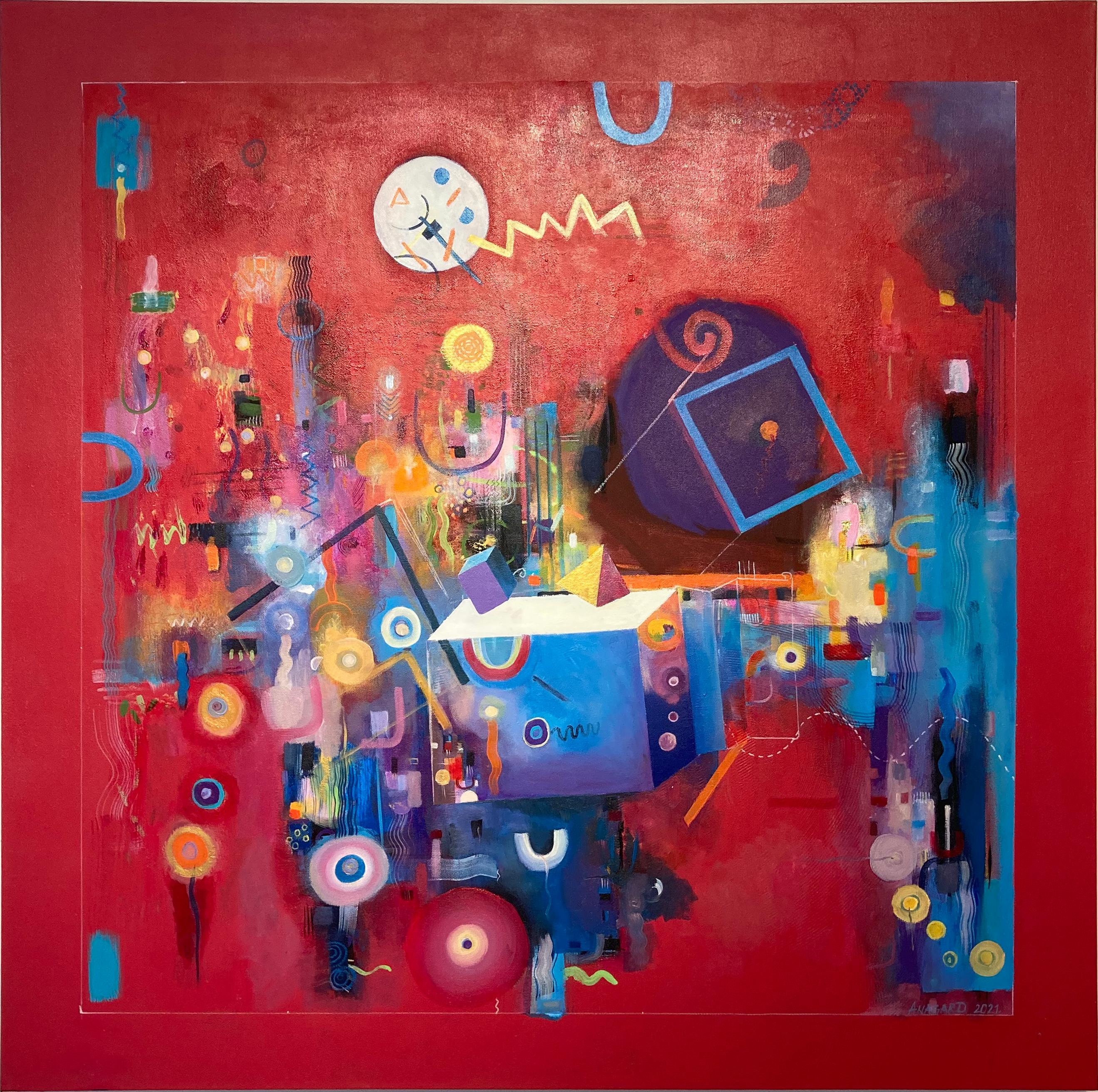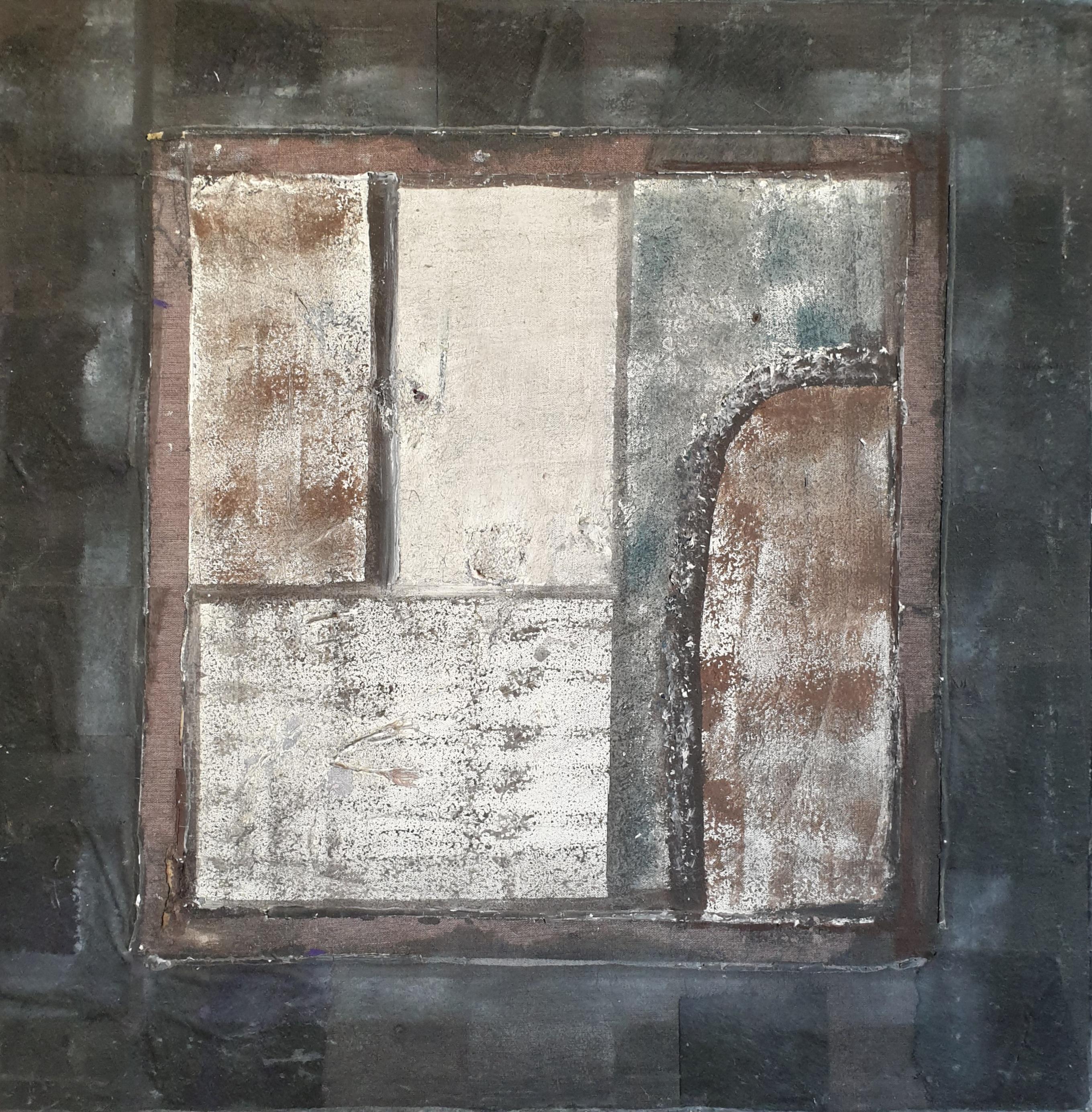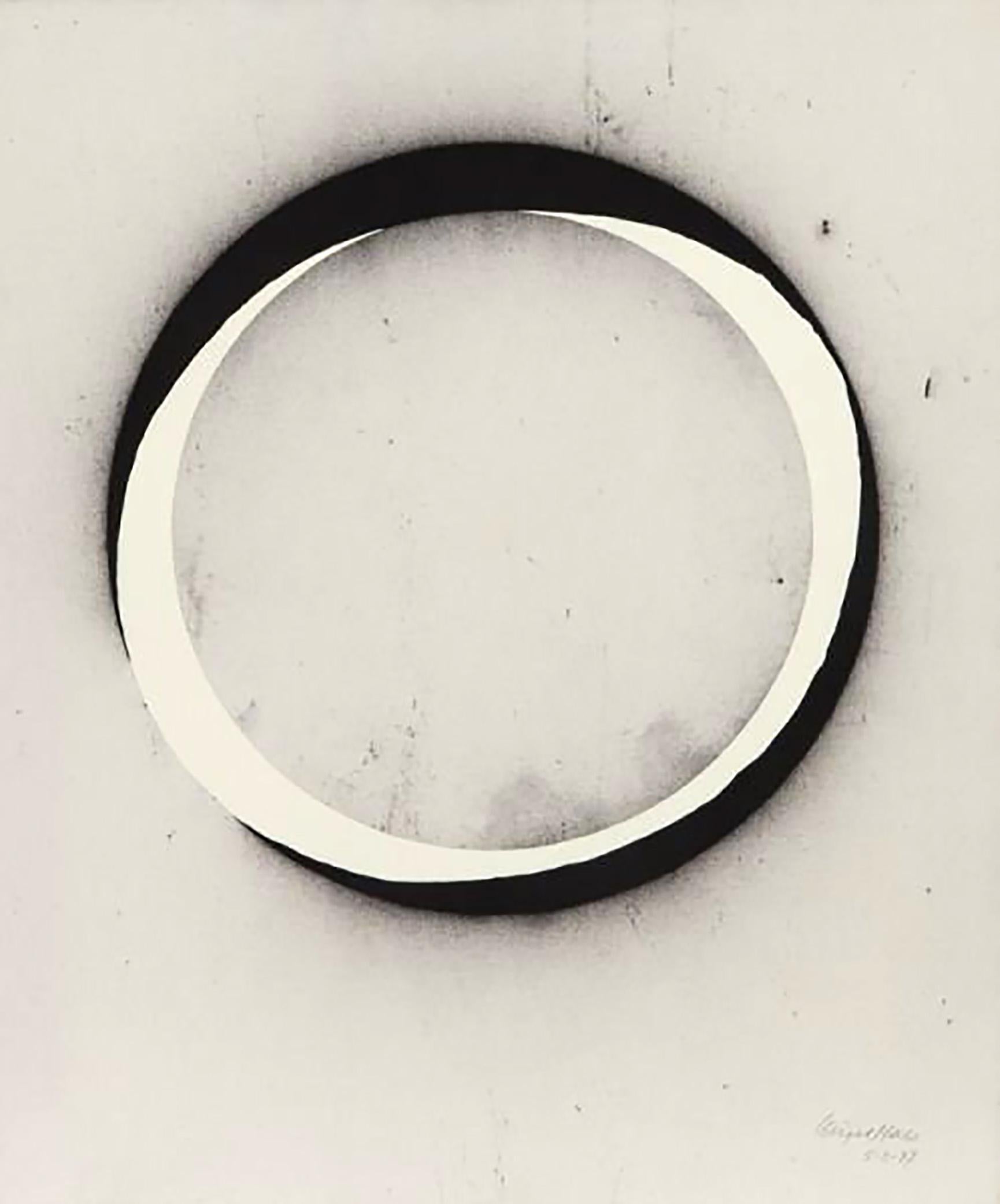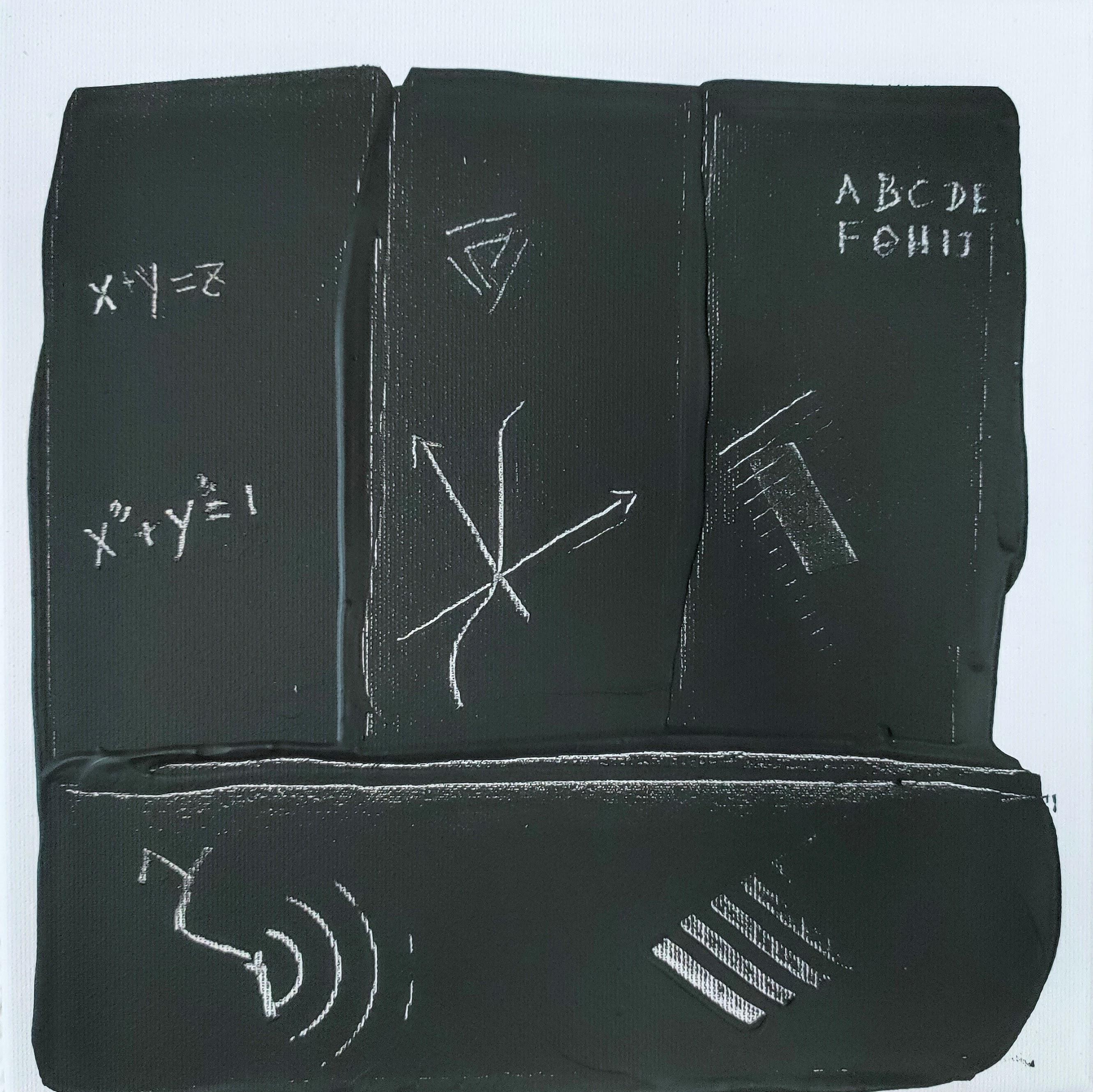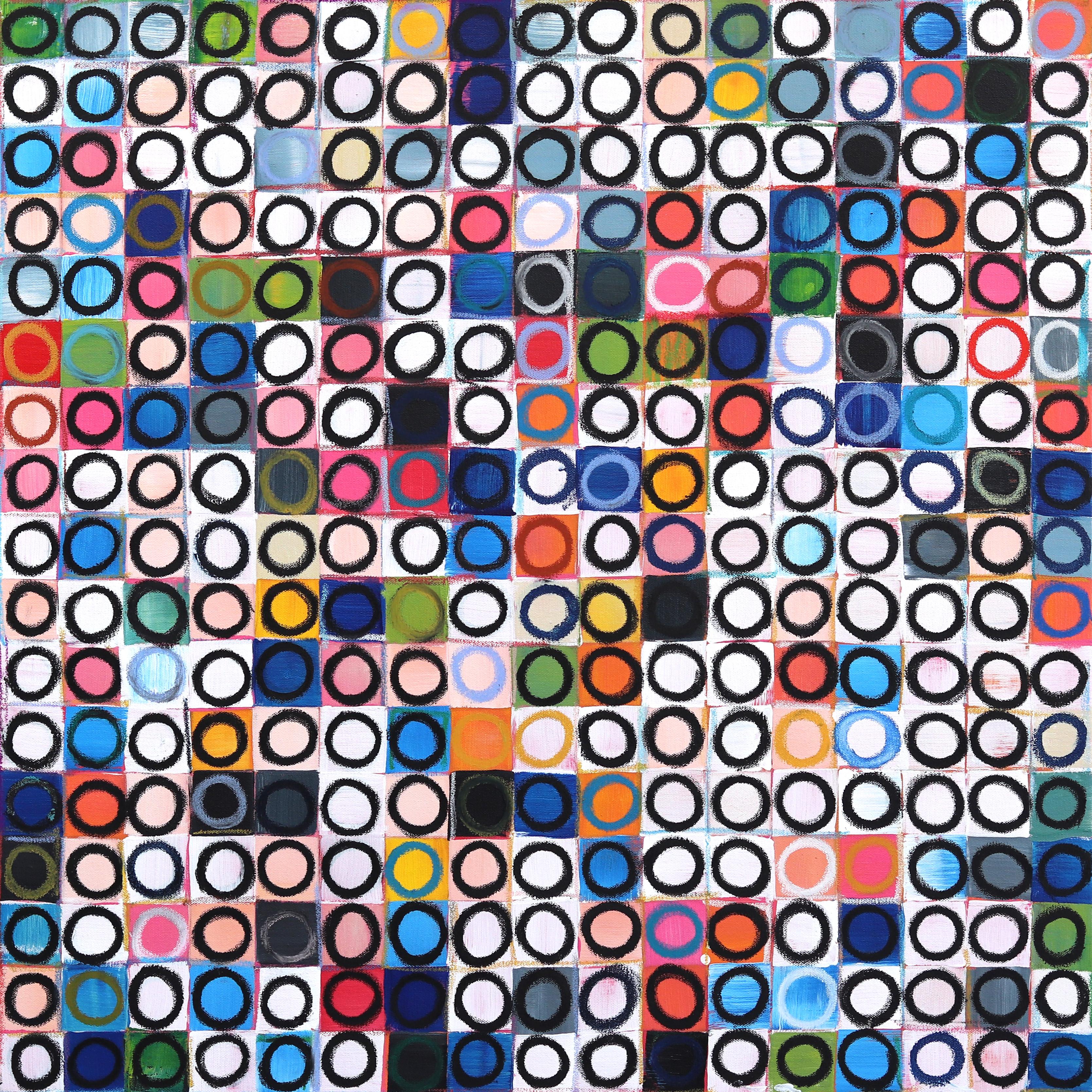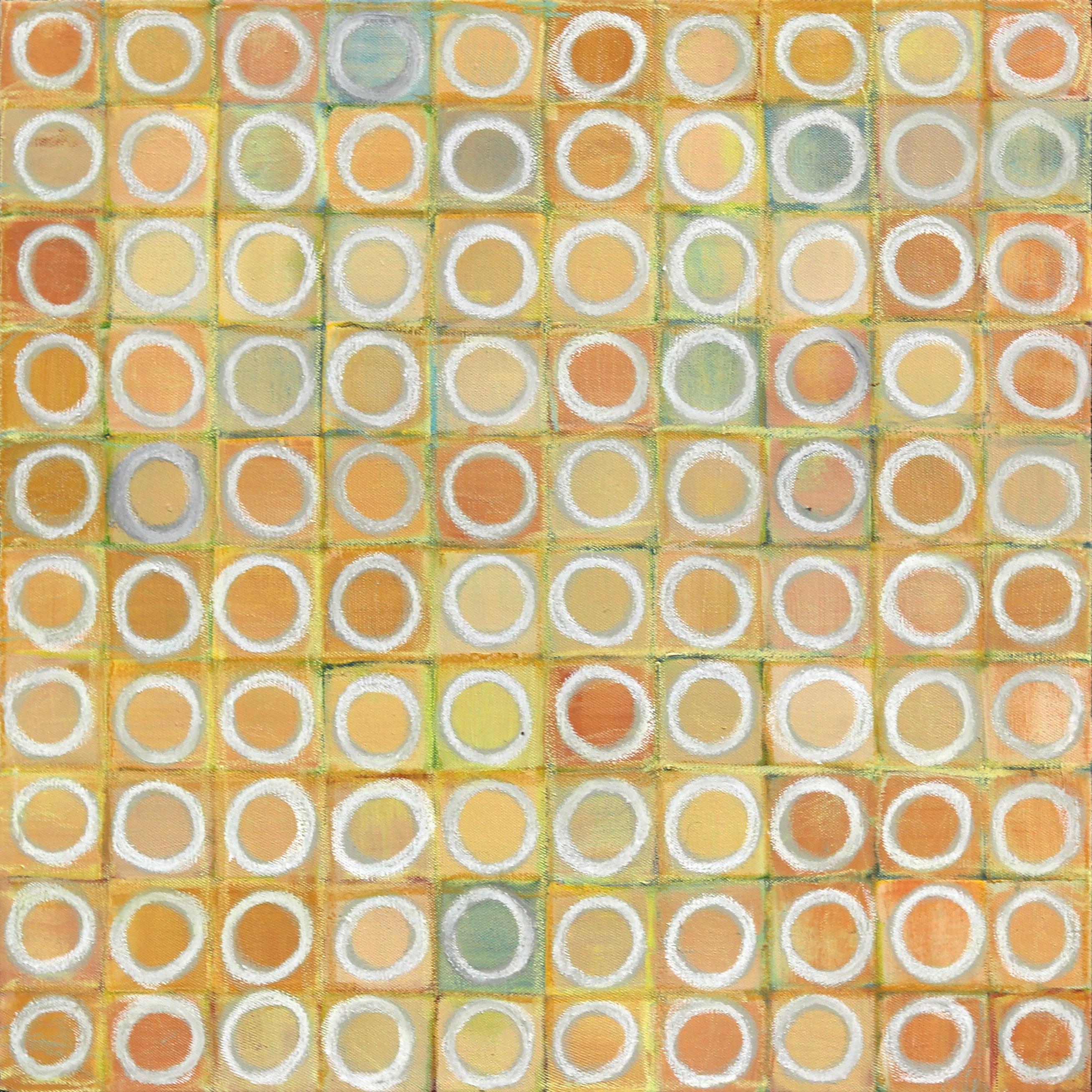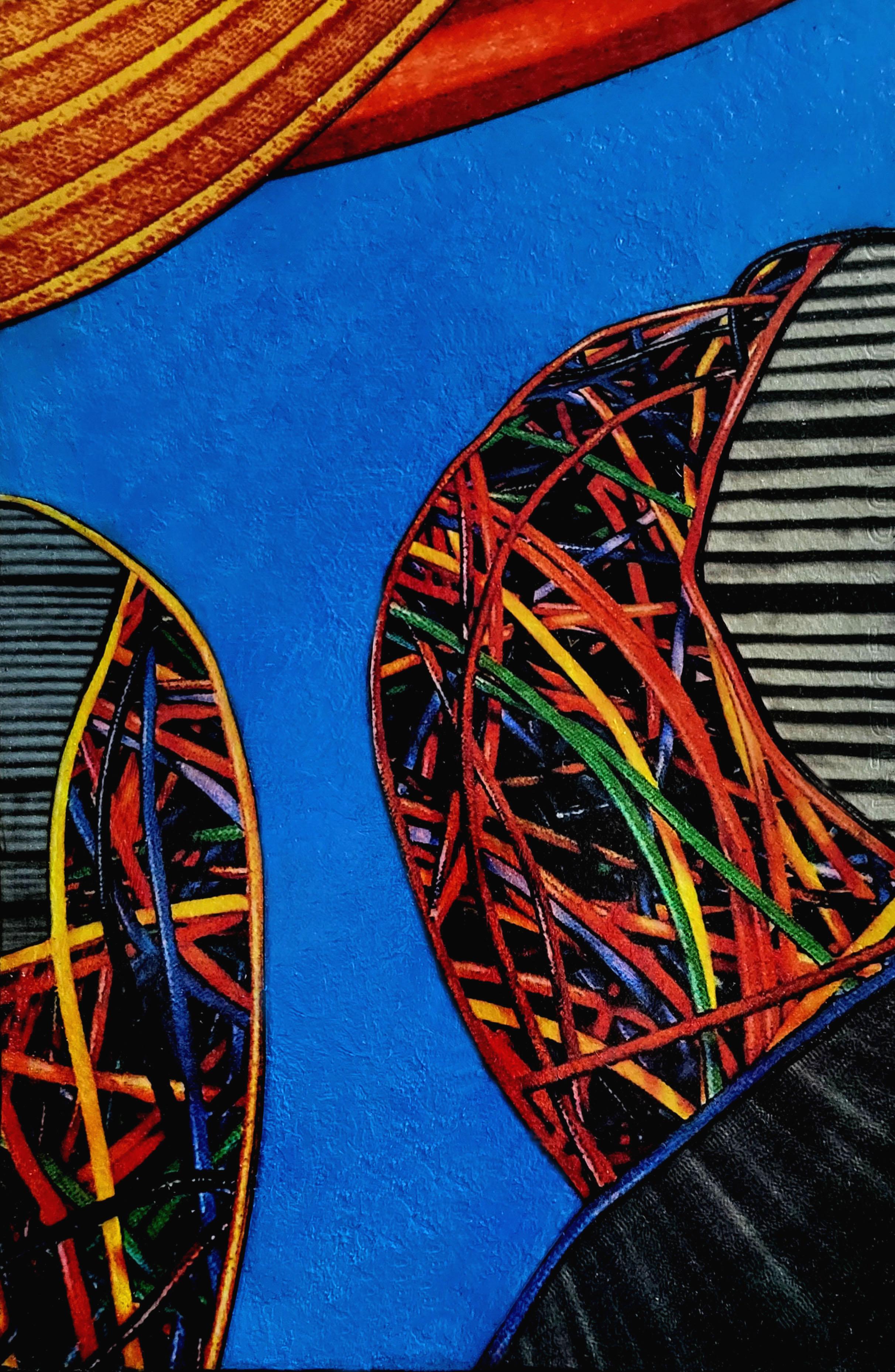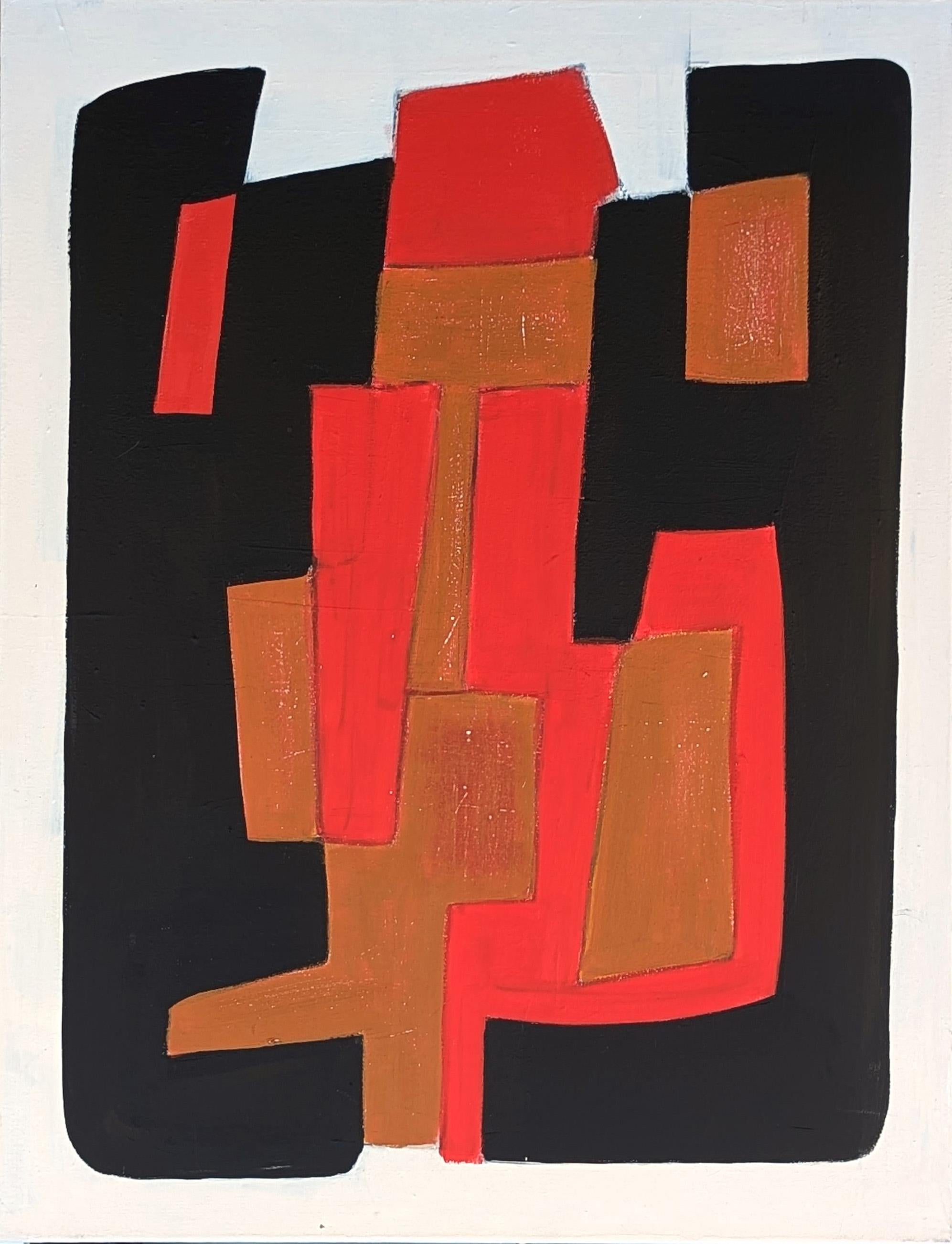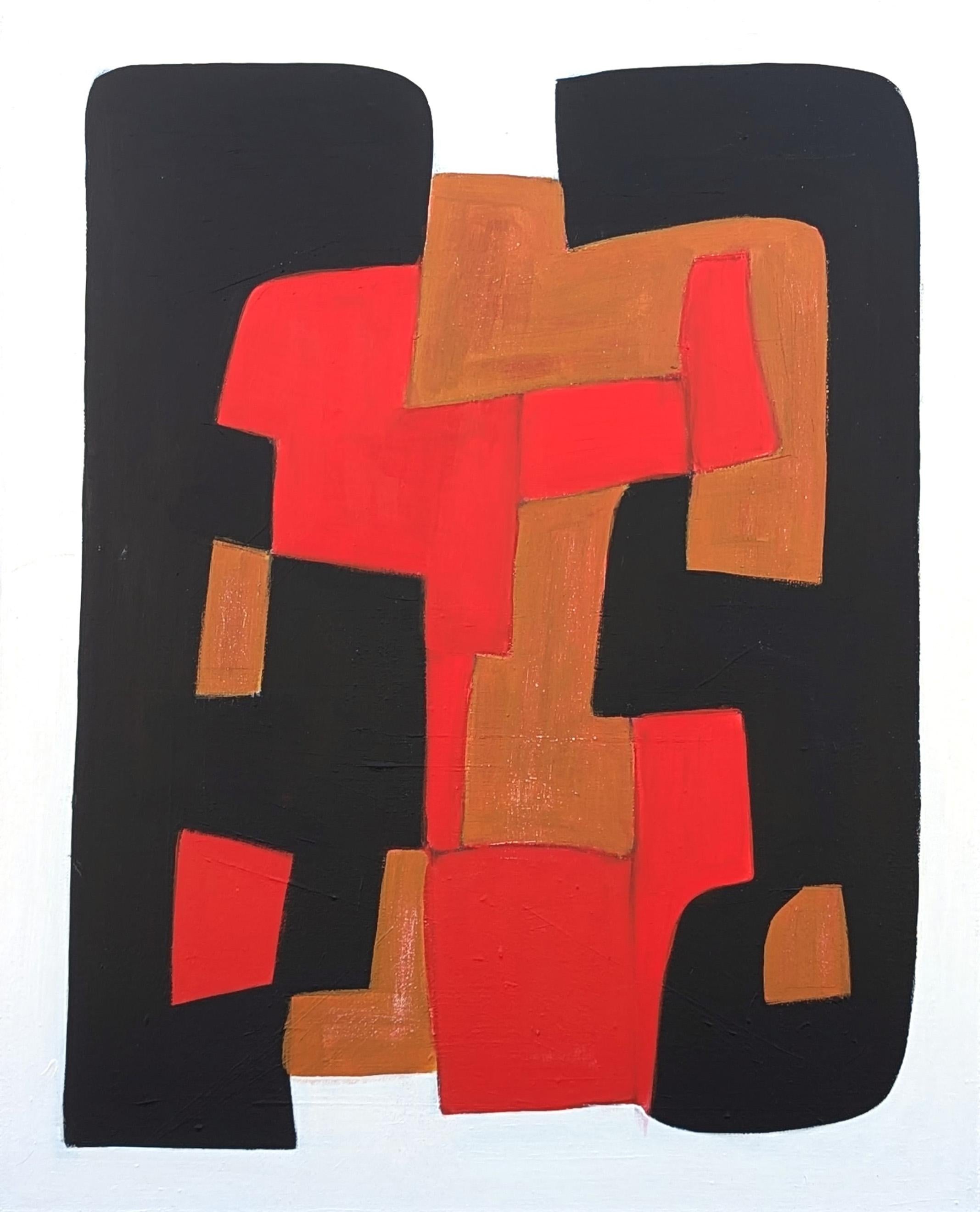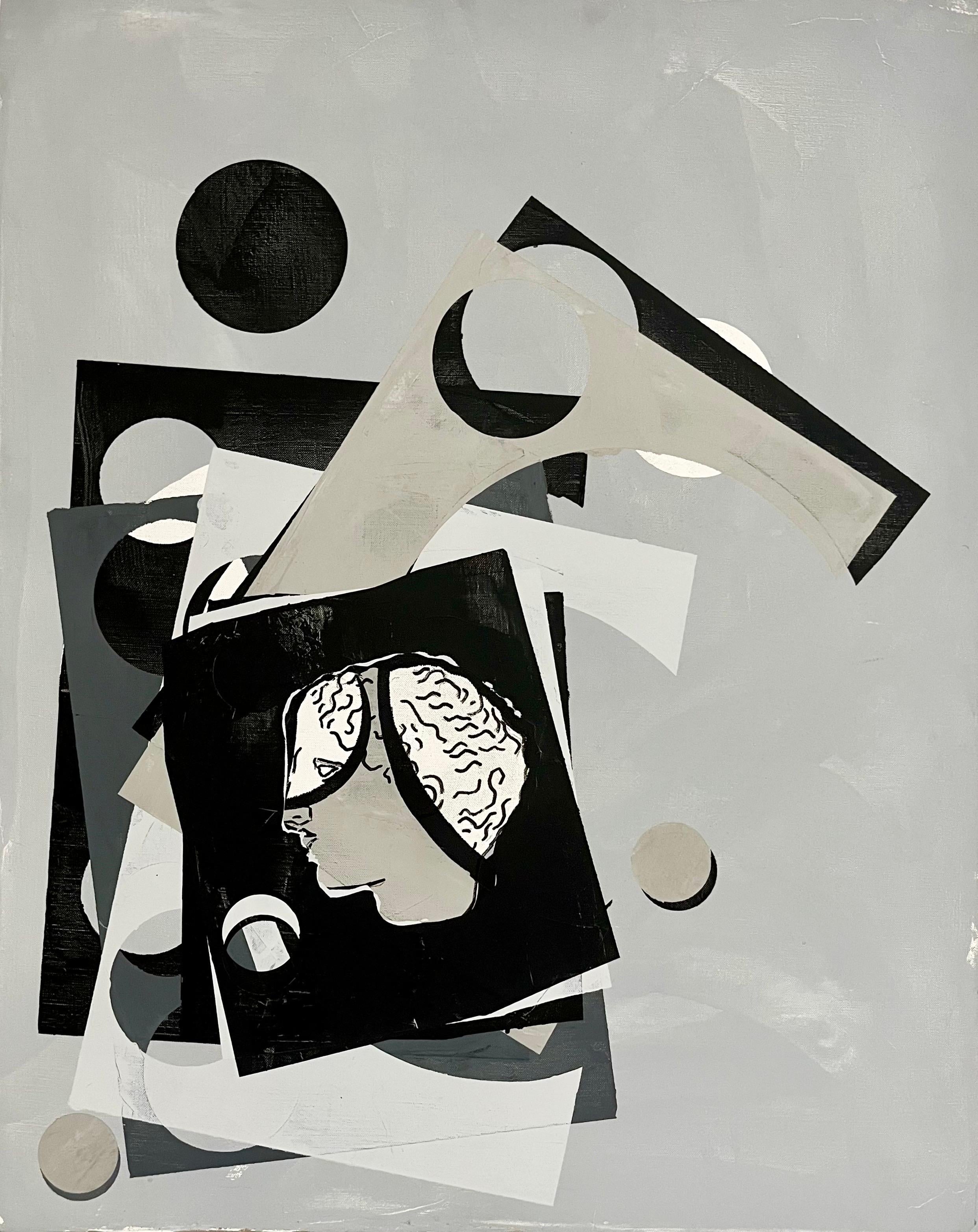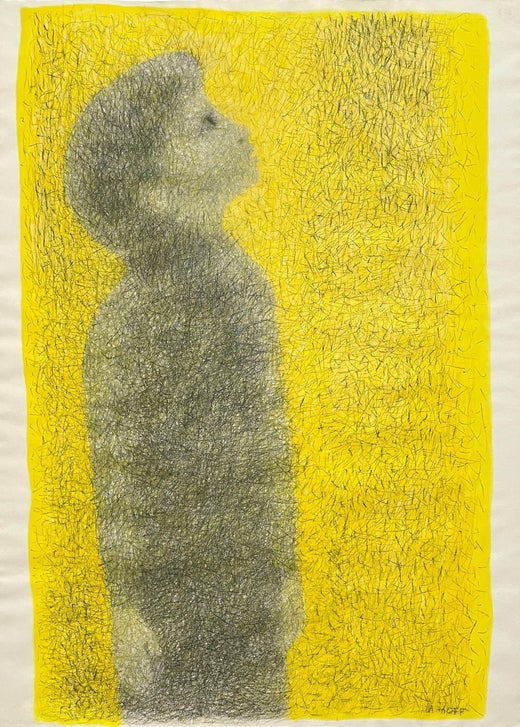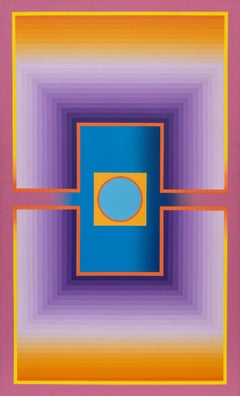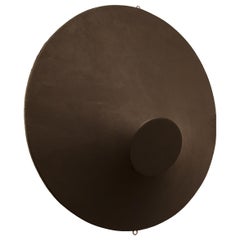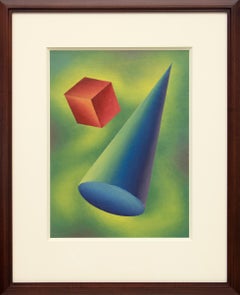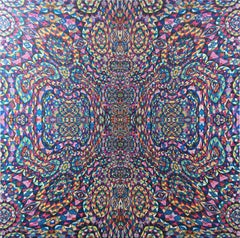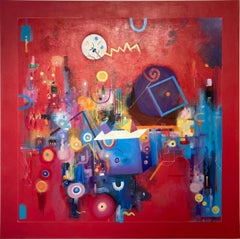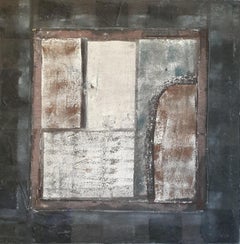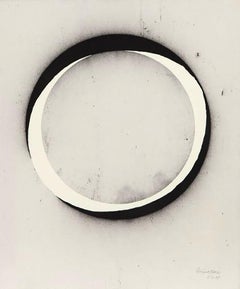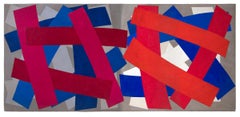
Summer Holiday, Abstract Geometric Acrylic and Canvas Collage, Red White Blue
Want more images or videos?
Request additional images or videos from the seller
1 of 10
Margo HoffSummer Holiday, Abstract Geometric Acrylic and Canvas Collage, Red White Blue
$24,500List Price
About the Item
- Creator:Margo Hoff (1912, American)
- Dimensions:Height: 25.75 in (65.41 cm)Width: 55 in (139.7 cm)Depth: 1.25 in (3.18 cm)
- Medium:
- Movement & Style:
- Period:
- Framing:Framing Options Available
- Condition:
- Gallery Location:Denver, CO
- Reference Number:Seller: 245461stDibs: LU27310640272
Margo Hoff
A prolific artist, Margo Hoff’s exquisite style evolved throughout her career yet was always rooted in the events, people, and places in her life. The human experience was her sole focus, expressed through her eyes alone. Born in 1910 in Tulsa, Oklahoma, Hoff began creating white, clay animals at a young age, giving them to her friends and family. At eleven she contracted typhoid fever and was bedridden for a summer. During her convalescence, she drew and made cutouts, and it was during this time that her bold, artistic imagination came alive. She began formal art training in high school and continued her education at the University of Oklahoma, Tulsa. In 1933 she moved to Chicago and attended the National Academy of Art and the School of the Art Institute of Chicago. Between 1933 and 1960, her Chicago years, Hoff’s work was deeply rooted in a figurative, regionalist style. She often used elements of magical realism, and many of her paintings have dreamlike qualities. She lived, worked, taught, and painted in Europe, Mexico, Lebanon, Uganda, Brazil, and China. She also showed at the Denver Art Museum’s Annual Western Exhibitions in 1952, 54, 56 and 57. In 1957 she showed along-side Colorado modernist Vance Kirkland at the Denver Art Museum’s exhibition, Man’s Conquest of Space. What was once a focus on the representational, her work began to change after 1957 when she saw Sputnik in its orbit around Earth. At that moment, feet firmly placed on the ground, she was able to imagine herself in space, looking down from the cosmos, and what she saw was an abstracted world. She then had the opportunity to peer into an electron microscope where once again she was looking down into what seemed to be a realm of pure abstraction. These two events profoundly changed her perspective and she began to move from figural painting to abstract, geometric collage. In 1960, Hoff moved to New York City and she began creating collages. Placing the canvas on the ground, and working from all sides, she used strips of painted paper and tissue, and later painted pieces of canvas, glued onto the canvas surface, building layer upon layer, shape against shape, “action of color next to stillness of color.” She believed these simplified, abstracted forms held the spirit of the subject in the same way poetry reduces words to their essence. These pieces range from aerial cityscapes, to dancers in motions, to flora and fauna, whittled down to geometric shapes and flat, bold colors. Hoff’s work was exhibited widely throughout the United States and in England, France, Italy, and Lebanon. She passed away in New York City at the age of 98, leaving a rich legacy behind. Margo Hoff’s works are in the collections of: The Art Institute of Chicago, the Brooklyn Museum, the Metropolitan Museum of Art, the National Gallery of Art in Washington, D.C., and the Whitney Museum of American Art.
About the Seller
5.0
Gold Seller
Premium sellers maintaining a 4.3+ rating and 24-hour response times
Established in 1979
1stDibs seller since 2013
290 sales on 1stDibs
Typical response time: 13 hours
Authenticity Guarantee
In the unlikely event there’s an issue with an item’s authenticity, contact us within 1 year for a full refund. DetailsMoney-Back Guarantee
If your item is not as described, is damaged in transit, or does not arrive, contact us within 7 days for a full refund. Details24-Hour Cancellation
You have a 24-hour grace period in which to reconsider your purchase, with no questions asked.Vetted Professional Sellers
Our world-class sellers must adhere to strict standards for service and quality, maintaining the integrity of our listings.Price-Match Guarantee
If you find that a seller listed the same item for a lower price elsewhere, we’ll match it.Trusted Global Delivery
Our best-in-class carrier network provides specialized shipping options worldwide, including custom delivery.More From This Seller
View AllWitches Entrance 1960s Abstract Geometric Composition, Figures in Red Green Blue
By Edward Marecak
Located in Denver, CO
A dynamic and boldly imaginative work by celebrated mid-century Denver artist Edward Marecak, "Witches Entrance" is an original abstract painting dating to the 1960s. Rich in color a...
Category
1960s Abstract Geometric Mixed Media
Materials
Oil Pastel, Acrylic
Rays - 1975 Abstract Geometric Acrylic Painting in Violet, Orange & Cerulean
Located in Denver, CO
"Rays" is an original abstract colorist painting by the renowned artist and filmmaker Victor Atkins. This striking work features geometric strips of vivid color, masterfully arranged...
Category
1970s Abstract Geometric Abstract Paintings
Materials
Acrylic
Black on Black Mid-Century Modern Painting, 3-D Shaped Canvas Hanging Mobile Art
By Angelo Di Benedetto
Located in Denver, CO
This stunning mid-century modern abstract 3-D painting was created by Denver modernist Angelo Di Benedetto (1913-1992), circa 1950. The piece features a shaped, three-dimensional can...
Category
Mid-20th Century Abstract Abstract Paintings
Materials
Canvas, Acrylic
1940s Abstract Geometric Oil Painting: Framed Blue & Green Basic Form #2
By Ralph Anderson
Located in Denver, CO
This vibrant mid-century abstract geometric painting features a bold composition of interlocking green, blue, and orange shapes, rendered in rich oil paint on high-quality paper. The...
Category
Mid-20th Century Abstract Geometric Abstract Paintings
Materials
Oil
Logarithmic Spiral #2 – 1970s Original Abstract Geometric Oil Painting
Located in Denver, CO
Step into the captivating world of mathematical beauty and artistic precision with Logarithmic Spiral #2, an original 1970s oil painting on board by Pueblo, Colorado artist Chase Var...
Category
1970s Abstract Geometric Abstract Paintings
Materials
Oil
1950s Original Geometric Abstract Oil Painting, Vertical & Horizontal Art
By Paul Kauvar Smith
Located in Denver, CO
This vibrant and dynamic original abstract oil painting by Paul Kauvar Smith (1893–1977) showcases the artist’s bold use of color and modernist technique. Executed in oil on board, t...
Category
1950s Abstract Geometric Abstract Paintings
Materials
Board, Oil
You May Also Like
Totem, 2020, acrylic, oil, marker, liquid gold leaf, op-art, pattern, red, blue
Located in Jersey City, NJ
Totem, 2020, acrylic, oil, artist marker, liquid gold leaf, op-art, pattern, red, blue, yellow.
Hand signed by artist
Certificate of Authenticity included
Framing available
Category
2010s Abstract Geometric Abstract Paintings
Materials
Gold Leaf
'Levitation, ' by Dragana Milovic, Acrylic on Canvas Painting, 2021
Located in Oklahoma City, OK
This 40" x 40" acrylic on canvas painting, 'Levitation,' by Dragana Milovic depicts a fantastical abstracted landscape of geometric shapes and lines in...
Category
2010s Abstract Geometric Abstract Paintings
Materials
Canvas, Mixed Media, Acrylic
Abstract Geometric Mixed Media Acrylic on Canvas.
Located in Cotignac, FR
Abstract geometric mixed media painting probably dating from the 1980s.
The painting has been created using various mediums to create an interesting texture and form to the rough ca...
Category
Late 20th Century Abstract Geometric Mixed Media
Materials
Fabric, Canvas, Organic Material, Acrylic
Signed unique Acrylic and Charcoal Painting on Canvas, renowned British sculptor
By Nigel Hall
Located in New York, NY
Nigel Hall
Untitled Acrylic and Charcoal Painting on Canvas, 1997
Acrylic and charcoal painting on canvas
Signed and titled by the artist on the front. Dated on the back.
36 × 30 inc...
Category
1990s Abstract Geometric Abstract Paintings
Materials
Canvas, Charcoal, Acrylic
Old Black Schoolboard Minimalist Small painting 30x30cm by Anastasia Vasilyeva
By Anastasia Vasilyeva
Located in Zofingen, AG
Monochrome abstract conceptual artwork uses the principle of color field painting.
30x30x1,7cm, Ready to hang and signed on the backside.
Shipping worldwide in a safe package with ...
Category
2010s Abstract Geometric Abstract Paintings
Materials
Gesso, Canvas, Acrylic, Engraving
289 Circles - Colorful Abstract Geometric Original Painting on Canvas
By Brandon Neher
Located in Los Angeles, CA
Califonia artist, Brandon Neher captivates with his figurative abstract artworks that seamlessly blend German Expressionism and Pop Abstraction. His original paintings on canvas embo...
Category
21st Century and Contemporary Abstract Geometric Abstract Paintings
Materials
Canvas, Oil Pastel, Mixed Media, Acrylic
Recently Viewed
View AllMore Ways To Browse
Heart Wall Art
Framed Matisse
Tube Top
Athens Greece
Works In Progress
Black Square Paintings
Mystical Art
Cuban Artists
Insect Art
1973 Abstract Painting
Large Pastel Paintings
Modern Art Painting Circles
Las Vegas
Paintings On Copper
Red White And Blue Abstract
Acrylic Mid Century Paintings
Semi Abstract Painting
Stockholm Painting

